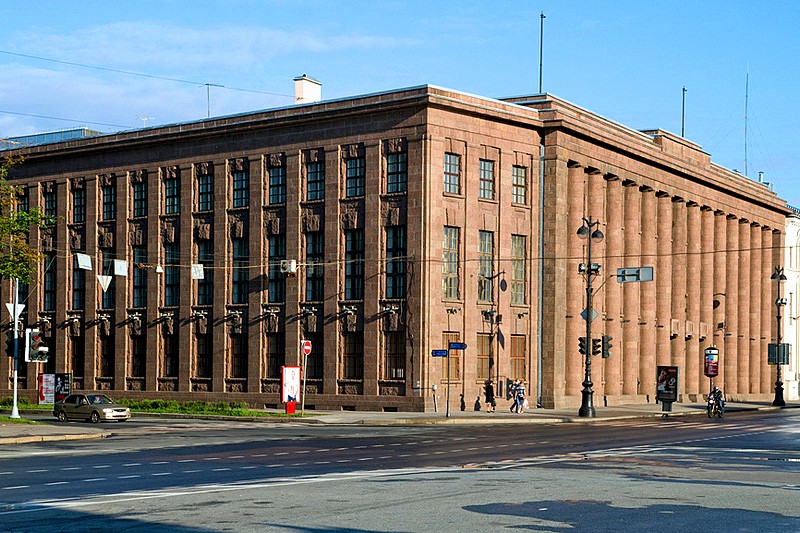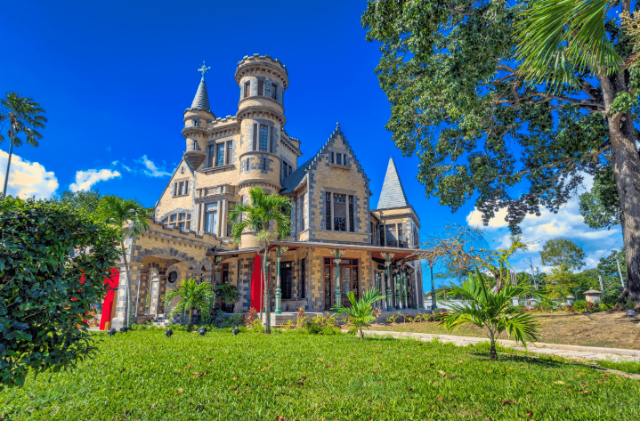German Embassy Building
Less famous than his proteges, who included Le Courbusier, Walter Gropius and Ludwig Mies van der Rohe, Behrens is considered the first industrial designer for his revolutionary work with AEG, and the father of German modernist architecture. He was commissioned in 1911 to build the replacement for an 18th century mansion that had been bought by the German Emperor as his representative mission in St. Petersburg in 1873.Behrens’ design, a monolithic red-granite block with minimal but muscular classical decoration, exactly anticipated the architecture that would come to the fore two decades later under Stalin (and under Hitler in Germany) but caused a scandal among the Petersburg public. The thick columns decorating the facade were compared to Bavarian sausages, and the figures of Castor and Pollux in the huge sculptural group that crowned the building to burly grooms.













